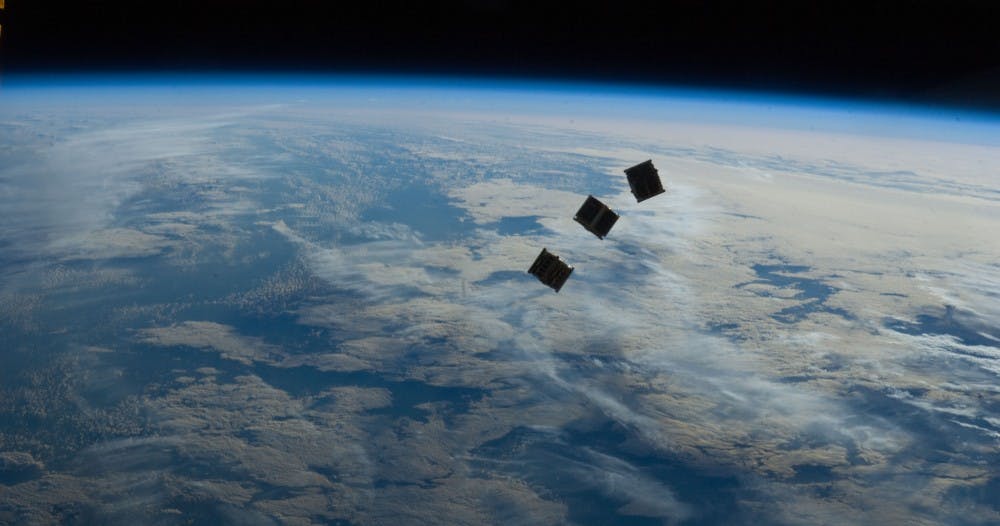Engineering students at the University have been working on a project, CubeSat, which will track a small satellite using a ground station. The satellite will communicate with the ground station to gather data, which will be shared with information from other universities, such as Virginia Tech and Old Dominion.
CubeSat is sponsored by NASA and collaborates with other universities through the Virginia Space Grant Consortium. CubeSat will be collecting data on atmospheric drag in low earth orbit.
Currently, the students are finishing the design phase of the ground stations, which involves selecting proper equipment and securing funding for necessary purchases from the University. After the design phase of the project, students will start prototyping the stations.
“Collaboration between all universities has been overall very beneficial for the project,” fourth-year Engineering student Colin Mitchell said. “Working with students from differing majors and education backgrounds has led to some very creative and effective design solutions that none of us would have been able to reach alone.”
The current team of students have utilized previous research to help design and begin to implement the project.
“The students that worked on this project from last year did a great job providing documentation and explanation behind design decisions that they made, which helped us get up to speed on the project starting last fall,” Mitchell said in an email to The Cavalier Daily.
Students are involved in all aspects of this project. Through division into sub-teams, students are able to work on specific tasks, such as management of the project and the design of different aspects of technology used in the project. The management team is in charge of budgeting, communication, scheduling and risk analysis involved in the project. Other subteams include Data and Communications, Thermal and Environmental Analysis and Orbits and Control.
This project is conducted with Amateur Radio Club W4UVA. W4UVA is responsible for designing, constructing and operating two ground stations. The radio club has helped with a large portion of the ground station design and will operate the ground station and help students gather data.
“In addition, a number of students — including myself — have obtained amateur radio licenses in order to legally operate and test our radio setups,” Mitchell said.
Although the satellite will only communicate with one ground station, two ground stations will be created for the project. One will be actively used in the project, while the other ground station will serve as the site for development of new technology. In order to minimize risk, W4UVA conducted extensive research on successful designs at other universities — such as Virginia Tech — to create designs of the ground stations.
“The primary ground station will be located at a site on Grounds with a clear view of the sky in all directions,” W4UVA trustee Mike McPherson said in an email to The Cavalier Daily.
The backup ground station will be located at the W4UVA station at Observatory Mountain Engineering Research Facility.
“The ground stations will also be used to support future U.Va. CubeSat missions in the planning stages, and we plan to participate in federated ground station networks with other universities to eventually provide continuous ground station coverage for research satellites,” McPherson said.
According to McPherson, the ground stations will be functional by summer of 2017. Prior to the launch of the project’s prototypes, students will practice operating the test stations by tracking other satellites.







